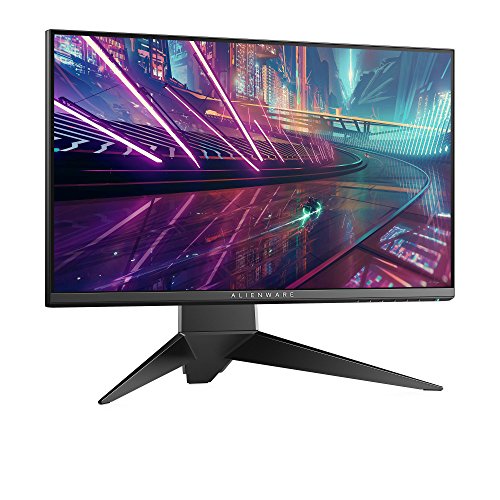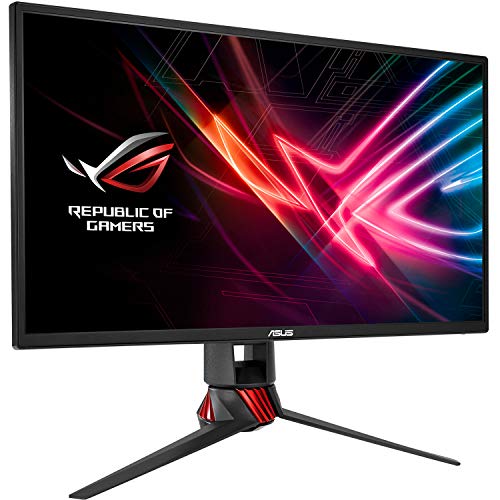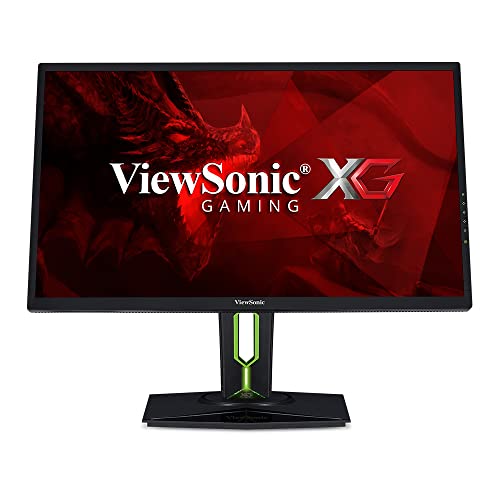Are 240Hz Monitors Good for Gaming?
I might be stating the obvious here, but, the crux of an ultimate gaming experience rests on the flawless graphics and seamless gameplay. Nothing is more satisfying than getting immersed completely into the world inside the game which can be manifested by the smoothly flowing movements thanks to the high refresh rates of your gaming monitor and equally capable PC to push it through high frame rates (FPS). While diligently taking all the sine qua non’s of a perfect gaming monitor into account, you just can’t let the refresh rates of a monitor slide past your radar. After all, higher the frequencies, better the performance, right? Well, is it really the case? It is always healthy to have a skeptical perspective on things and therefore you’ll hopefully get a nice direction on what to do next once you’re done reading this piece.
| # | Preview | Name | Response Time | Screen Size | Display Type | Panel Type | Details |
|---|---|---|---|---|---|---|---|
| 1 |  | Alienware AW2518H | 1 ms | 25' | LED | TN | Check Price |
| 2 |  | ASUS ROG Strix XG248Q | 1 ms | 23.8” | LED | TN | Check Price |
| 3 |  | Acer Predator XB272 | 1ms | 27'' | LCD | TN | Check Price |
| 4 |  | ViewSonic XG2560 | 1ms | 25'' | LCD | TN | Check Price |
| 5 |  | Acer XF250Q | 1ms | 24.5' | LED | TN | Check Price |
| # | 1 |
| Preview |  |
| Name | Alienware AW2518H |
| Response Time | 1 ms |
| Screen Size | 25' |
| Display Type | LED |
| Panel Type | TN |
| Details | Check Price |
| # | 2 |
| Preview |  |
| Name | ASUS ROG Strix XG248Q |
| Response Time | 1 ms |
| Screen Size | 23.8” |
| Display Type | LED |
| Panel Type | TN |
| Details | Check Price |
| # | 3 |
| Preview |  |
| Name | Acer Predator XB272 |
| Response Time | 1ms |
| Screen Size | 27'' |
| Display Type | LCD |
| Panel Type | TN |
| Details | Check Price |
| # | 4 |
| Preview |  |
| Name | ViewSonic XG2560 |
| Response Time | 1ms |
| Screen Size | 25'' |
| Display Type | LCD |
| Panel Type | TN |
| Details | Check Price |
| # | 5 |
| Preview |  |
| Name | Acer XF250Q |
| Response Time | 1ms |
| Screen Size | 24.5' |
| Display Type | LED |
| Panel Type | TN |
| Details | Check Price |
Last Update on 2025-01-21 at 23:35 / Affiliate links / Images from Amazon Product Advertising API
What are refresh rates and why are they important?
For those novices who are oblivious of this jargon, let us elucidate this important feature of a gaming monitor in simpler words. Basically, this is the number of times your panel refreshes per second, more it does, smoother everything looks and the movement will look more and more seamless. If you’re a full-blown gamer, you must swear by higher refresh rates to gain all the edge in your competitive gameplay you can. Animations will attain more realism and the movements of your mouse on the pad will become nicer. Usual TV monitors have refresh rates or FPS of 60 MHz and you can’t go beyond that. In order to get the best frames rates out of your monitor with high refresh rates, you need to have a strong PC armed with GPUs capable of reaching high frame rates. There are two types of monitors according to their sync-ability with respective GPU brands, G-sync monitors are ready to be synced with the frame rates of NVIDIA GPUs while Free-sync monitors go with AMD GPUs respectively. Of note, refresh rates and pixel quality/numbers of a monitor are independent of each other, you can have 4K monitors with 144 Hz and 240 Hz as well. So what exactly is the distinguishing perk that comes with 240 Hz monitors? Let’s find out.
What are the advantages of 240 Hz monitors?
 We played games on a 144 Hz as well as a 240 Hz monitor side by side and we noted marked differences between these games. When we looked up close, the animations were improved especially the minor movements of fingers, hand motions, gadgets, etc. It helped a lot with the motion blur and ghosting on the screen during brisk movements of your character. The bottom line is, this is pretty beneficial for gamers who are fond of eSports or other online competitive games, however, it is not much of a requirement for casual gamers and normal users.
We played games on a 144 Hz as well as a 240 Hz monitor side by side and we noted marked differences between these games. When we looked up close, the animations were improved especially the minor movements of fingers, hand motions, gadgets, etc. It helped a lot with the motion blur and ghosting on the screen during brisk movements of your character. The bottom line is, this is pretty beneficial for gamers who are fond of eSports or other online competitive games, however, it is not much of a requirement for casual gamers and normal users.
What are the disadvantages of 240 Hz monitors?

We noticed that outside of games like CS GO, in more graphically demanding games like Rainbow Six Siege, we had to limit some of our options, like overall quality, a little bit to get that maximum juice out of 240 Hz refresh speed. It won’t pose trouble in games like CS GO, however, we had to tone down some settings in other games to reach the 240 FPS. Now this is all a matter of personal preference, if you’re an avid CS GO or COD enthusiast, this is a solid bet for you.
How many FPS can a 240 Hz monitor can display?

In order to achieve the highest frame rates per second (FPS), games rely on both the monitor’s refresh rates as well as the innate power of your PC’s graphics card. If you have a robust graphics card capable of boosting the game through high loads, you can achieve a maximum of 240 FPS with your 240 Hz monitor. You can’t possibly enjoy high FPS with a sub-par graphics card or PC system even on your 240 Hz monitor, it will only give you mid-range frame rates at best. Hence, it is best to pair up your Free-Sync monitor with a strong AMD card and G-Sync monitor with a strong NVIDIA card.
Are 240 Hz monitors worth the money?
It is mostly a subjective matter at this point. Even after the foregoing elaboration, some competitive gamers might be hesitant to fork out a significant amount of $150 plus for their new 240 Hz monitors. Such gamers will probably wait another year for the prices to fall down while hardcore gamers will be enjoying the better visuals in the meantime. The final verdict is if you’re keenly immersed into your gaming and demand pitch perfect gameplay clean of any motion blurs and motion trailing, you might want to get your hands on the 240 Hz monitor. Meanwhile, there are gamers who are complacent with their 144 Hz monitors at this point.






